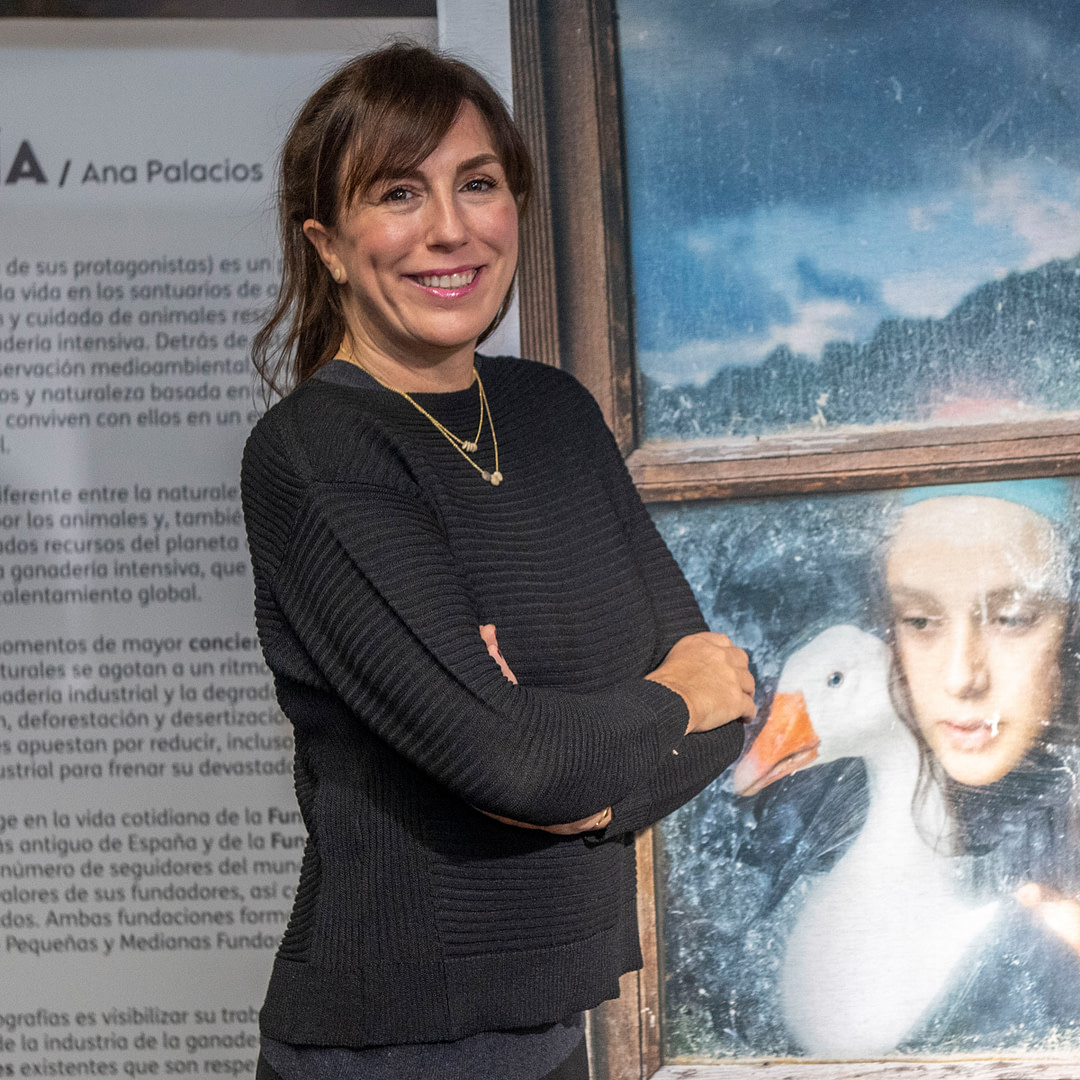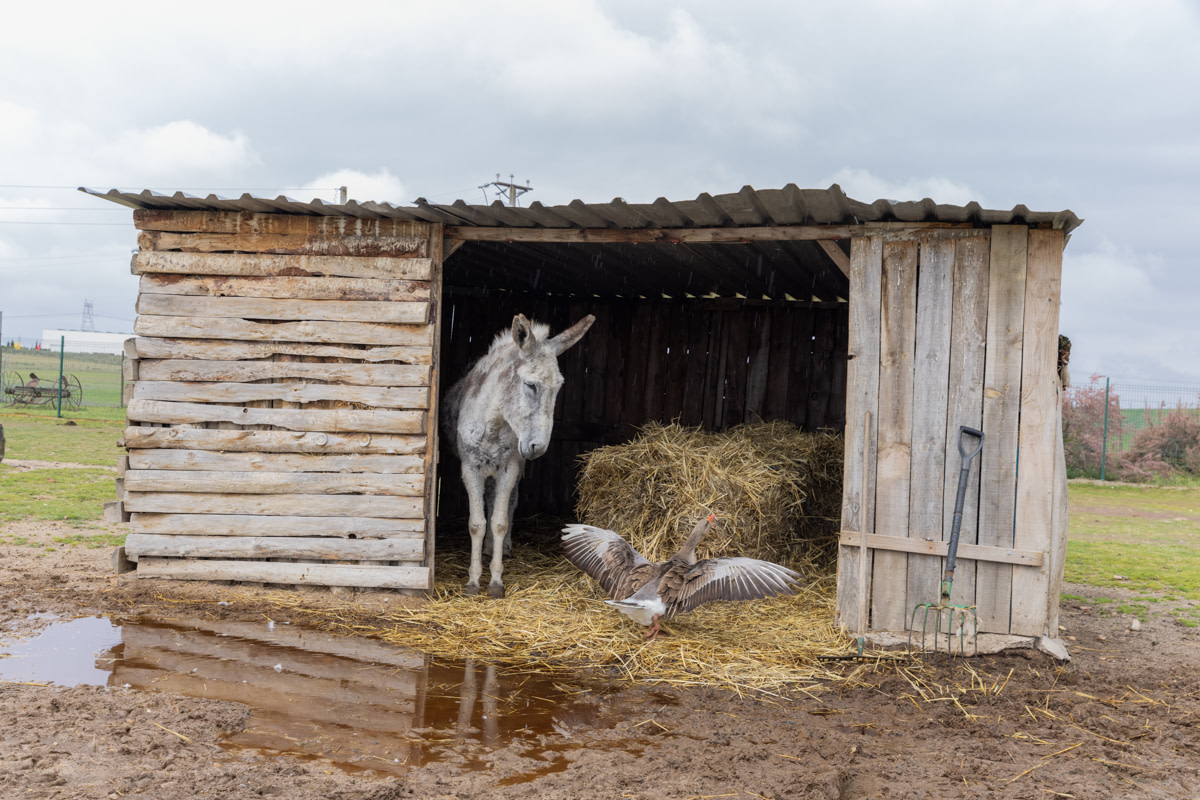Interview with Visual Journalist Ana Palacios

We spoke with Ana to learn more about her compelling work, which includes photography, book, and film projects.
Ana Palacios (AP): Animals have been a “late love” for me. I am a journalist, but my professional life has developed for 25 years between the film industry, when I worked as a production coordinator in mostly Hollywood films, and documentary photography linked to human rights.
My love for animals only went as far as my little dog Tiza. It was only in 2020, when I had an assignment to document daily life in several animal sanctuaries, when everything changed for me. I began to look at animals as sentient beings, each one with their own personality and particularities in character. That radically changed the way I understood the world.
AP: Armonía is the name of this five-day-old lamb. She was going to be euthanized because she had a broken leg. They alerted the Gaia Sanctuary (Spain) and they rescued her, treated her and today take care of her like a daughter. This image, in which she looks at me with a calm gaze, stirs many emotions and represents the focus of my work, which is centered on the intersection between humans and non-humans, that relationship of overwhelming empathy and affection that sanctuaries exude.

AP: It is a long-term project that I want to continue to carry out in other continents (searching for sanctuaries now, so please, reader, feel free to contact me if you are interested). It is so called because wild love is the common denominator that I found in all these spaces. An unconditional surrender of humans to other animals, with patience, respect and an unwavering love. On many occasions I witnessed that these feelings went in both directions and that was a very gratifying surprise. It is that giveaway that I found so inspiring and touching. It is now the focus of my professional interest to continue to explore those places filled with wild love.


AP: When I documented the challenges in the tri-border area of Brazil, Peru and Colombia, I thought it was “only” about the plundering of indigenous communities’ lands for extractive industries and the harassment and cornering of these communities. However, the problem is much greater. The environmental consequences of land violations have cross-cutting effects on all the inhabitants of the earth.
The intensive livestock industry contributes to the deforestation of the Amazon by converting portions of it into intensive crop monocultures for animal consumption. This industry directly harms the health of the planet and all of us on it because it directly affects the reduction of rainfall, the increase in temperature that melts glaciers, the promotion of natural disasters and, therefore, the gradual destruction of the earth. The same with massive fishing and the discharge of toxins into the rivers as a result of the extractive industry in the area, harming the conditions of water quality and marine ecosystems and inevitably extending to humans as well.

AP: What motivates me most in my work is to think that maybe what I am doing can improve someone’s life, that making injustices visible can call citizens to action. My biggest challenge… to achieve it.
AP: I try to intervene in the scene as little as possible. To go unnoticed as much as I can, and to be purely documentary. Although I not only limit myself to this photojournalistic form of documenting, I also do posed portraits that complement the strictly documentary work.
AP: I would say it will change your life and your perspective of understanding the world nowadays.
AP: Animals are an important topic to discuss, as lately we are seeing how their rights are being claimed all over the world, how the violations of their rights are unknown, the lethal consequences for the soil of the intensive livestock industry and how important it is to take care of them for a healthy and sustainable environment.

AP: Right now I have an exhibition about animal sanctuaries in the Círculo de Bellas Artes of Madrid and another exhibition in Barcelona on the Ukrainian refugees in Spain. My documentary film on slave children can be watched via Filmin, and my books on social issues can be purchased on my website.








